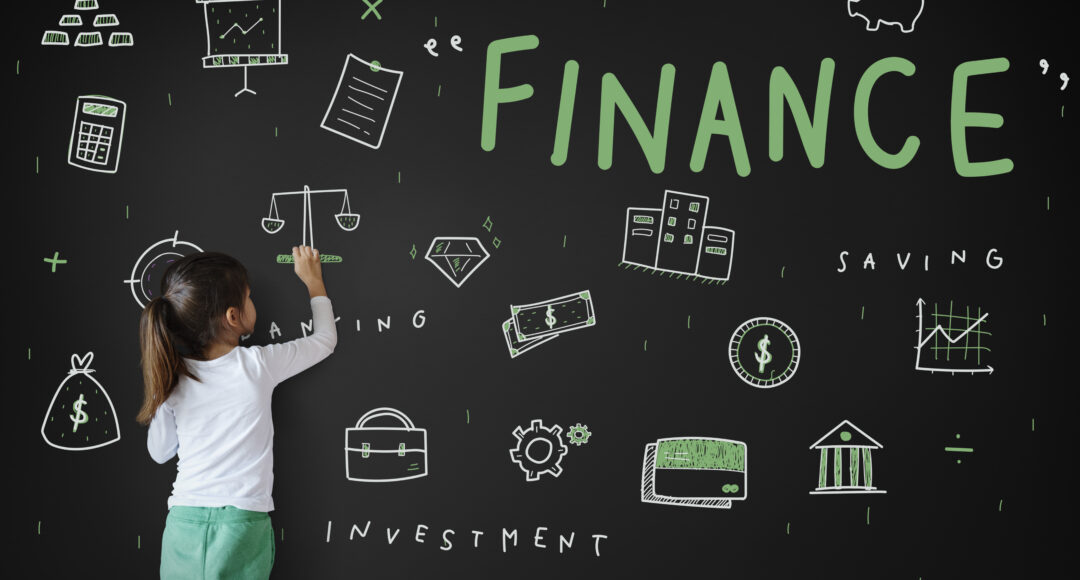
One thing is certain – there is a lot of uncertainty around us. From rising inflation to pandemic-related financial support ending, the future can seem daunting, not only for us, but for our children as well.
We know that financial education is a critical tool during a crisis. It puts you in the driver’s seat. It gives you back control. Knowing how to navigate the financial system helps people get loans, get unemployment and manage debt wisely.
Double-down now on financial literacy education for the next generation
Many Americans simply don’t have any savings at all. According to Bankrate data from January 2022, 56% of Americans would be unable to cover an unexpected $1,000 bill with savings. In other words, Americans are very much, in general, under-saved — even though those who do save are often not saving enough.
“Critical Gap” in personal finance education persists
The pandemic highlighted a critical gap in how we prepare our citizens to navigate in a financially complex society. And now, the cessation of pandemic-related financial help is also ending for many and throwing many families into financial trouble. The “critical gap” in financial education persists.
A 2019 paper produced for policymakers by the Consumer Financial Protection Bureau reviewed the latest academic research. They concluded that “starting early with age-appropriate and relevant financial education and consistently reinforcing those lessons can pay dividends over the course of a lifetime”. As a society we know this and have known it for a long time. We need to stop simply giving lip service to the issue of financial literacy and put meaningful actions behind the words.
Here’s how to start young now
Start early introducing and discussing financial topics with your kids. (Kids are really smart, so start earlier than you might think – as young as 4 years – so the knowledge can really “stick”.) It takes a commitment on your behalf to introduce this education to your children – but the payoff is enormous. First, take a look at our tools at moneysavvy.com. Then spend some time reading the published research proving that our curriculum and tools truly work. We’ve made an investment in research to prove that what we have developed actually improves your child’s financial knowledge. Our tools help your child implement and practice those new financial skills.
Start simple. Introduce money skills to your child using the Money Savvy Pig. Give them a little “seed” money in smaller denominations and let them decide where to put it. (Don’t guide them, just watch!) Then circle back to the choices they are making with the Money Savvy Pig and start talking about those choices. Before you know it, you will be ready for more and can launch into our online curriculum.
Model good financial habits – and talk about them
We know that for those who possess financial literacy, their suffering through the money crisis of the last several years has been less; their journey easier. The financially literate among us were simply better prepared for the many unprecedented challenges to everyone’s personal finances.
Our goal as parents should be to make every child financially literate; to learn how to protect themselves through good financial habits. Part of that education is modelling good financial behavior for our kids to witness and adopt:
- Learn to save, and to have an emergency fund for when the unexpected happens. Talk about how you are saving and why.
- Learn to invest so your savings can greatly outpace the rate of inflation. Pick a stock that you would like to invest in and make it a family project to save the money to buy the stock and then track the performance of that stock monthly.
- Learn to live below your means, not paycheck to paycheck. Doing so, it will make it easier to absorb a temporary cut in income. Talk about your spending. New TV? Talk about how you saved for the purchase, used a sale to save money and why you even felt it was time for a new TV.
- Learn to use credit cards only in emergencies when cash flow takes a hit – not using up their available credit line for non-emergency purchases (living above their means). This ensures there is credit to tap should the need arise. Talk about why you are using a credit card instead of cash. How do you pay for the money you spent on the credit card?
- Prepare ahead of time by committing to education because you understand that education pays both in terms of higher wages and lower unemployment. Explain that education can often get you a better paying job.
- Know how to access health insurance that can pick up most of the enormous cost of a personal health disaster. Talk about this as you head to the doctor’s office for an annual check-up. How much does it cost? What do you pay, and what does insurance cover?
- Understand that when the stock market plummets due to uncertainty, the financially literate are able to comprehend what the investment experts are saying about the situation. And understand why that moment is not the time to sell. Likewise, know that your 401(k) should be the absolute last place to look for available cash. That one, dear readers, is just for parents or guardians – but don’t forget to explain this to your older kids when they start their first job!
Motivation for financial education
There’s a Buddhist saying that goes “pain is an inevitable part of human existence, but suffering is optional.” Let’s redouble our efforts to give our kids and ourselves the education and the tools needed to see and understand the financial options available to us. Help our kids build the good financial habits they need. We want the next generation to avoid suffering and to not just survive day-to-day life – but to thrive.





Leave a Comment